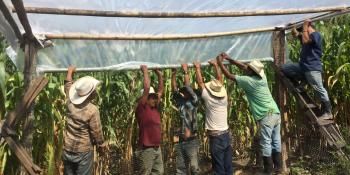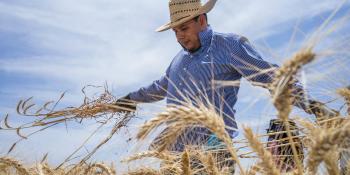A climate-smart way to improve soil fertility
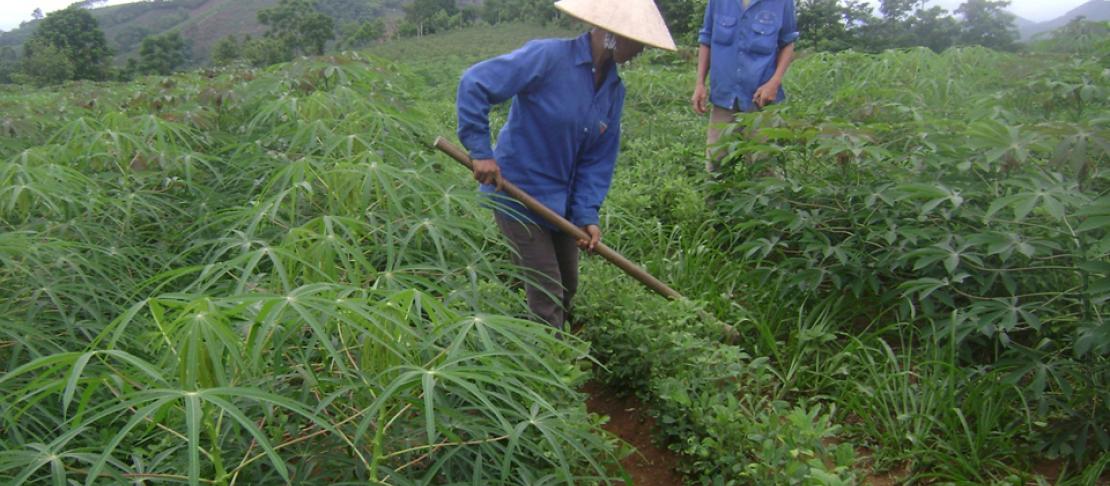
Because of biological nitrogen fixation and grass barriers in the cassava-cowpea-forage grass intercrop system, improved soil fertility was observed in northern Vietnam.
Van Yen district of Yen Bai province is among the concentrated cassava areas of the whole northern Vietnam with over 10,000 ha. For decades, the mono-cropped cassava system had triggered serious erosion and land degradation problems on cultivated slopes, which led to reduced yields and decline in soil fertility. “When I was still the president of Van Yen People’s Committee, I used to be on cassava fields during heavy rainfall events to observe the rain-triggered erosion process. Erosion was obviously severe and I knew we needed to take quick actions to mitigate the problem,” said Mr. Hung Tran, the current director of Yen Bai Department of Agriculture and Rural Development (DARD).
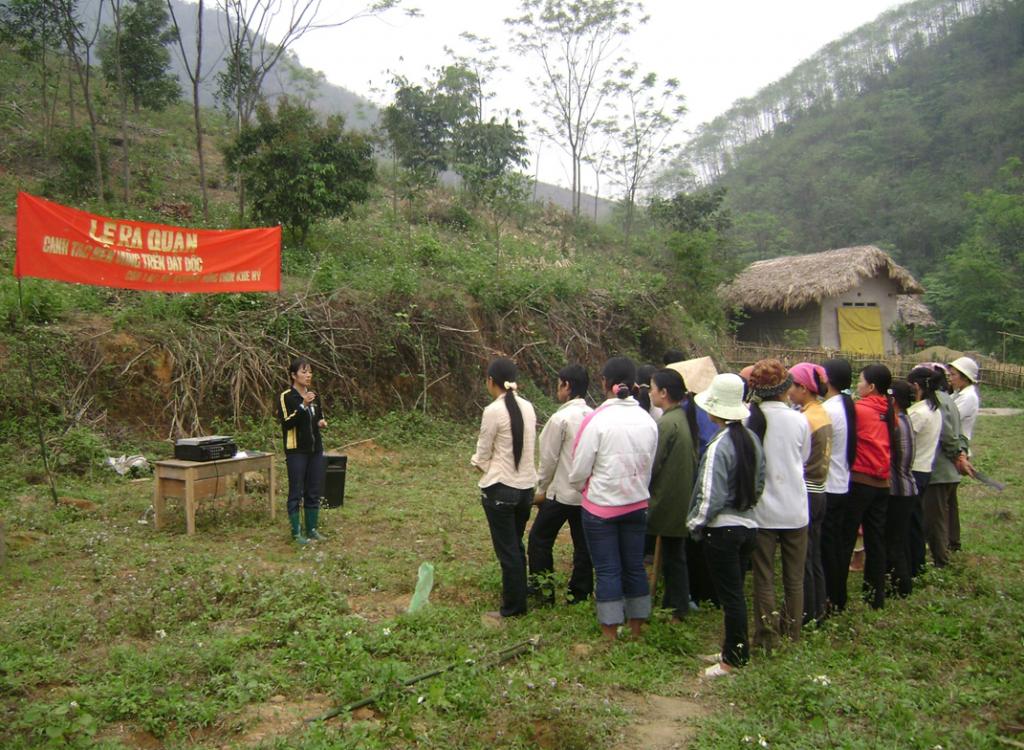
In Van Yen district, an event to launch the cassava-cowpea-forage grass intercrop system practice is being held yearly. Photo: Van Yen extension station
With the help of the International Center for Tropical Agriculture (CIAT), Van Yen DARD imported forage seeds and legume varieties from Thailand in 2000 and created an initiative on sustainable integrated intercrop system for cassava production. “We started this initiative in 2002 for 1,000 ha of mono-cropped cassava fields and have tried to scale out the model within the district yearly. Until now, we have implemented this practice for over 7,000 ha,” said Mrs. Hue Tran, former head of Van Yen extension station.
Over 15 years of implementation, this conservation practice has produced good results.
Erosion has been largely mitigated, topsoil has thickened within two grass barriers with good structure, and terraces have formed over the years. Soil fertility has increased due to the intercrop of cowpea presented by lower fertilizer application and higher yields. Moreover, we have managed to improve the livestock production through the cut-and-carry system, i.e. getting grass from cassava field to feed our cattle,” said Mrs. Nga, a 58 year-old head farmer of Muoi village of Van Yen district.
However, to prove this great improvement in improved soil fertility, an evidence-based study must be carried out, which has not been done so far. The CGIAR Research Program on Climate Change, Agriculture and Food Security (CCAFS) project team launched a quick survey collecting soil samples and plant samples of cassava and cowpea from fields implemented with this practice. The survey aimed to assess: the levels of atmospheric nitrogen that is symbiotically fixed by intercropped cowpea; the amount of fixed nitrogen added to the topsoil; and the volume of the nutrient taken up by cassava.
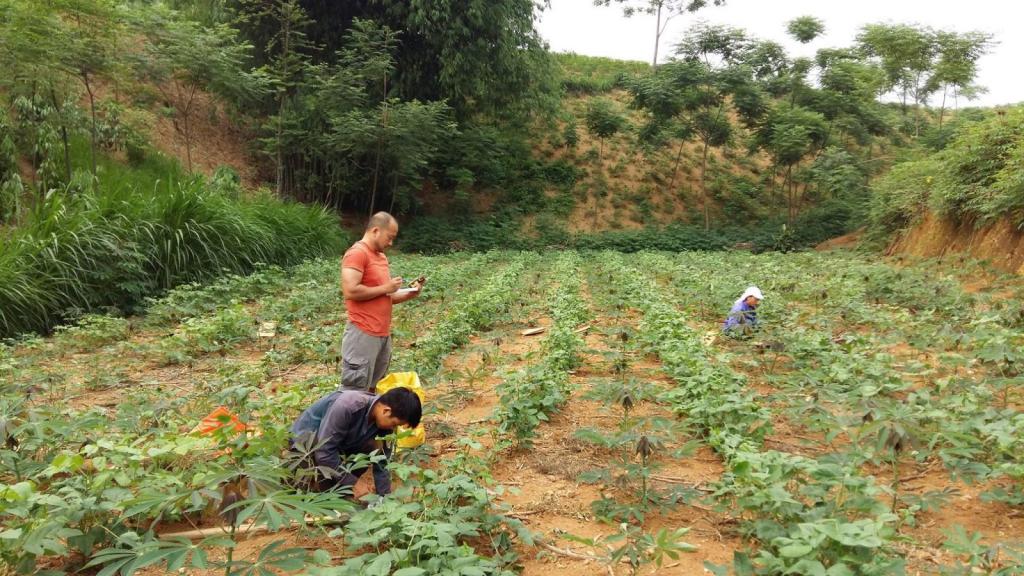
To foster more participation, farmer-scientist field collaboration in collecting soil and plant samples was conducted. Photo: Vinh Bui (CIAT)
In May 2016, 90 soil and 301 plant samples were collected from 12 fields, processed and analyzed with key parameters. The results show exactly the benefits of this practice in reality with scientific proofs. This can be used as a good recommendation for scaling out this conservation measure throughout the province and the whole northern region with cassava production on sloped land.
“This practice has helped my family escape from poverty, build a concrete house, and send my children to schools and universities”, a middle-aged male Muoi farmer happily shared. The project team hopes to contribute in bringing positive impacts to more cassava farmers in the northern cassava upland areas through similar good local initiatives.
Dr. Vinh Le Bui is a researcher at the International Center for Tropical Agriculture Asia. He is also CCAFS SEA’s coordinator for the Ma CSV in Vietnam.

